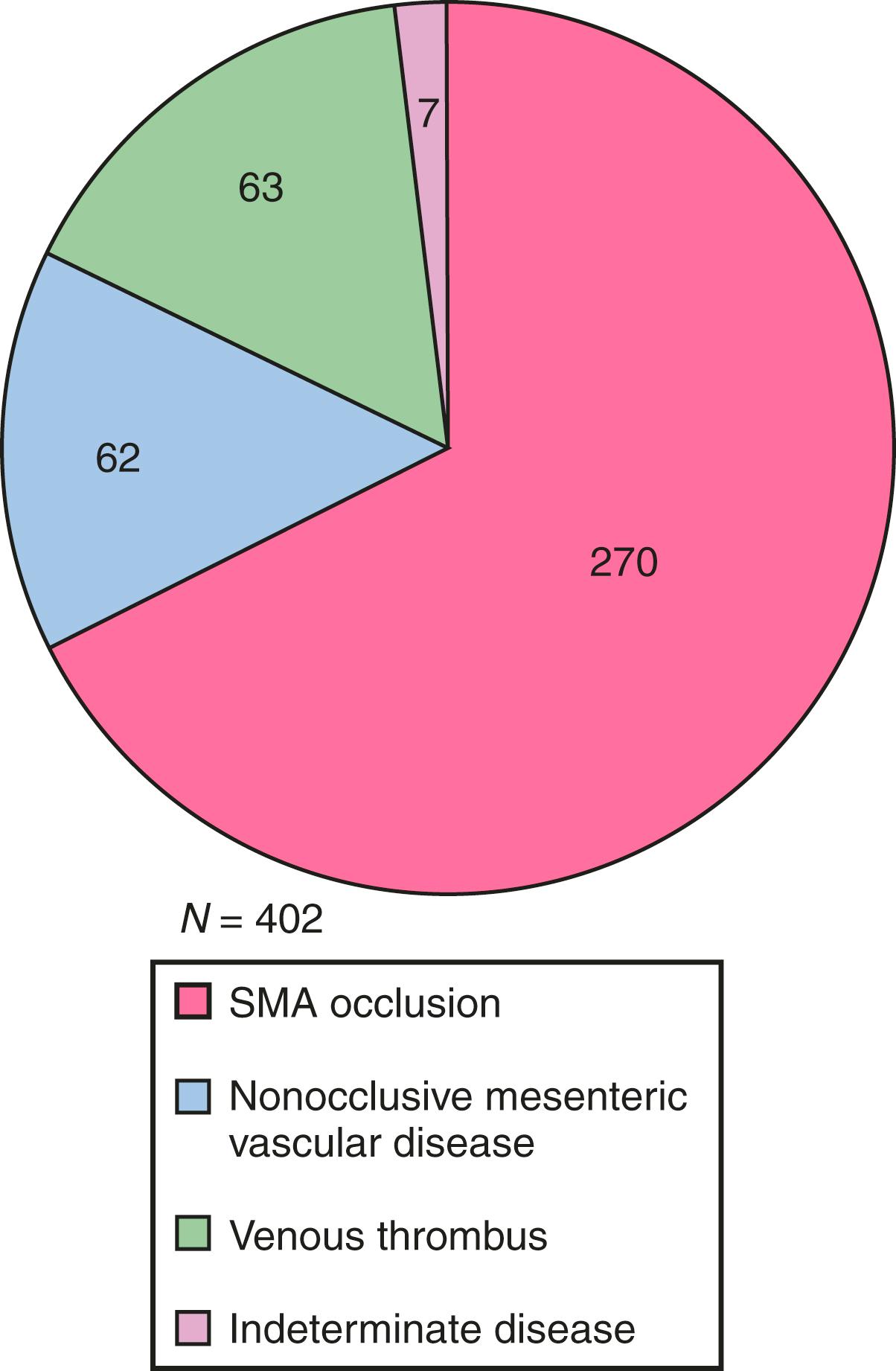Physical Address
304 North Cardinal St.
Dorchester Center, MA 02124
The common definition of mesenteric venous thrombosis (MVT) refers to a single entity involving thrombosis within the superior mesenteric vein with or without extension to the portal or splenic veins. Recovery following resection of infarcted intestine secondary to mesenteric vessel occlusion was first reported by Elliot in 1895. MVT was recognized as an entity distinct from mesenteric arterial occlusion by Warren and Eberhard in 1935.
MVT is most commonly encountered in middle-aged and older adult patients. , In a population-based study with an average autopsy rate of 87%, MVT was found to be present in 63 of 402 patients (16%) with acute mesenteric ischemia ( Fig. 137.1 ). Additionally, the overall incidence of MVT with transmural intestinal infarction was estimated to be 1.8 per 100,000 person-years in Malmö, Sweden, between 1970 and 1982, and the cause-specific mortality ratio was 0.9 per 1000 autopsies. The overall incidence of MVT increased to 2.7 per 100,000 person-years in the same city between 2000 and 2006. An important factor contributing to an underestimation of the latter incidence estimate was the declining autopsy rate, from 87% to 10%, between the two periods. In contrast, factors increasing the incidence estimate over time were the growing proportion of older adults in the population and the greater amount of diagnostic activity with higher quality images. Patients with MVT were diagnosed at autopsy, at operation, or with computed tomography (CT) in 12% (6 of 51), 19% (10 of 51), and 69% (35 of 51) of cases, respectively, during the latter period.

In a recent review including 11 contemporary studies, the pooled estimate of proportion of female gender was 34.5% (95% CI 30.5–38.5), suggesting that MVT is slightly more common in males.
Primary MVT is defined as spontaneous, idiopathic thrombosis of the mesenteric veins not associated with any other disease or etiologic factor. Patients with any condition known to predispose to MVT ( Box 137.1 ) are considered to have secondary MVT. Approximately 90% of MVTs are secondary.
Abdominal trauma (blunt and penetrating)
Postsurgical (particularly postsplenectomy)
Intraabdominal inflammatory states (pancreatitis, inflammatory bowel disease)
Peritonitis and abdominal abscess
Portal hypertension; cirrhosis of the liver
Congestive heart failure
Hypersplenism
Obesity
Increased abdominal pressure; abdominal compartment syndrome
Protein C and protein S deficiency
Antithrombin III deficiency
Activated protein C resistance (factor V Leiden gene mutation)
Presence of 20210 A allele of prothrombin gene
Methylenetetrahydrofolate reductase mutations
JAK2 V617F gene mutation
Neoplasms (particularly pancreatic and colonic)
Oral contraceptive use
Polycythemia vera
Essential thrombocytosis
Heparin-induced thrombocytopenia
Lupus anticoagulant–antiphospholipid syndrome
Cytomegalovirus infection
Extramesenteric venous thromboembolism
Become a Clinical Tree membership for Full access and enjoy Unlimited articles
If you are a member. Log in here